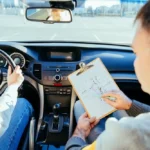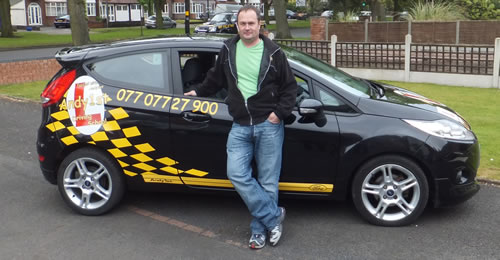Driving anxiety is a common issue for new drivers, often fueled by fears of losing control, causing accidents, or navigating unfamiliar roads. Overcoming this anxiety is crucial for building confidence and becoming a safe driver. This article offers practical strategies and exercises to help new drivers manage their driving anxiety, including essential parking lessons.

Content
Understanding Driving Anxiety
Driving anxiety can manifest physically, such as sweating and a racing heart, and mentally, like excessive worry and negative thoughts. Recognizing these symptoms is the first step in overcoming anxiety.
Strategies to Overcome Driving Anxiety
1. Gradual Exposure
Gradual exposure involves slowly introducing oneself to driving. Start with short, low-pressure drives in familiar areas, then gradually increase the complexity and length of your drives.
Steps for Gradual Exposure:
• Begin in a quiet neighborhood.
• Move to local streets with minimal traffic.
• Drive during different times of the day to experience varying traffic conditions.
• Eventually, practice on highways and in busier areas.
2. Deep Breathing and Relaxation Techniques
Deep breathing exercises can calm your nervous system and reduce anxiety.
How to Practice Deep Breathing:
• Sit comfortably and close your eyes.
• Inhale slowly through your nose for a count of four.
• Hold your breath for a count of four.
• Exhale slowly through your mouth for a count of four.
• Repeat this cycle several times before and during your drive.
3. Positive Visualization
Visualizing successful driving experiences can reduce anxiety. Spend a few minutes each day imagining yourself driving calmly and confidently.
Steps for Positive Visualization:
• Find a quiet place and close your eyes.
• Visualize yourself getting into your car, starting the engine, and driving smoothly.
• Picture handling various driving situations calmly and efficiently.
• Imagine arriving safely at your destination and feeling proud.
4. Defensive Driving Courses
Defensive driving courses offer practical skills and knowledge that can boost your confidence. These courses teach safe driving techniques, hazard awareness, and how to handle different driving situations.
5. Parking Lessons
Parking can be particularly stressful for new drivers. Gradual practice can improve your parking skills.
Parking Practice Tips:
• Start in large, empty parking lots to practice basic maneuvers like pulling in and backing out.
• Use cones to simulate parking spaces and practice parallel parking.
• Gradually move to busier parking lots as your confidence improves.
• Utilize parking aids, such as rearview cameras and parking sensors.
Practical Exercises for New Drivers
1. Parking Lot Drills
Begin in an empty parking lot to practice driving skills and parking techniques. Set up cones to simulate parking spaces and practice pulling in, backing out, and parallel parking.
2. Route Planning
Plan routes ahead of time to minimize stress. Choose familiar routes with less traffic initially, gradually incorporating busier routes as your confidence grows.
3. Driving with a Companion
Having a trusted friend or family member accompany you can provide reassurance and guidance. Choose someone calm, patient, and experienced.
Conclusion
Overcoming driving anxiety requires patience, practice, and the right strategies. Gradual exposure to driving situations, relaxation techniques, and practical experience through courses and exercises, including parking lessons, can build the confidence needed to become a skilled driver. Every driver was once a beginner, and with persistence, you too can overcome your driving anxiety and enjoy the freedom of confident driving.

Daniel is the eco-conscious auto whisperer. His blog doesn’t preach; it educates on the world of green transportation. It’s your guide to reducing your carbon footprint without sacrificing style or speed.








